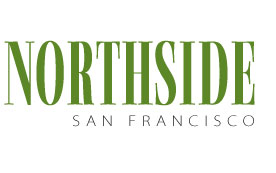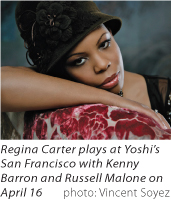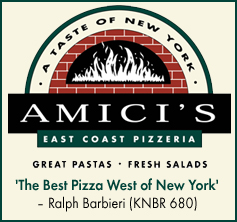 |

|
|||||||
|
Duke, Miles, Dizzy, Coltrane, Getz, and other giants: A history of jazz in San Francisco’s glory days Part One in a two-part series April is a good time to reflect on the art of jazz in San Francisco. SFJAZZ, one of our cultural treasures, is in mid-stride this month in its annual spring season. The Jazz Heritage Center in the Fillmore is featuring an exhibit of classic jazz photos by Herman Leonard, who is to jazz photography what camera genius Jim Marshall is to rock ’n’ roll. And the Monterey Jazz Festival’s All-Stars will be at Yoshi’s Fillmore outpost April 16. It all adds up to rich gumbo that contributes significantly to San Francisco’s long jazz history.  Right from its rambunctious beginnings, San Francisco had an infatuation with jazz – that compelling American art form that rambled from saloons, honky-tonks, melodeons, dance halls, and brothels to night clubs and finally to our concert halls. Right from its rambunctious beginnings, San Francisco had an infatuation with jazz – that compelling American art form that rambled from saloons, honky-tonks, melodeons, dance halls, and brothels to night clubs and finally to our concert halls.Not long after gold was discovered at Sutter’s Mill in 1848, when San Francisco was a tiny raw-boned village, miners, merchants, sailors, and con men not only patronized girlie shows but also aspired to so-called cultural pursuits – opera, symphonic music, even ballet of sorts. In the 1850s, Lola Montez did her version of classic dance. Her famous Tarantula Dance led audiences to assume a spider was crawling around beneath her costume. The first opera, Bellini’s Somnambula, was performed here in 1851. The San Francisco Symphonic Society presented concerts in 1881, occasionally offering works by Mozart or Handel. And, a little later along the Barbary Coast, entertainment included minstrel shows, ragtime and pop tunes of the time – in short, early “jass.” Yes, jass – as it was known then – was a precursor to the jazz many of us love today. Jelly Roll Morton, who claimed to have invented this art form, lived and worked in San Francisco for a while between 1917 and 1922. Paul Whiteman, self-styled King of Jazz, played the Fairmont Hotel in 1918. The first talkie movie, Al Jolson’s The Jazz Singer, was filmed near Union Square in 1927. In the Depression years that followed, and through the forties and into the fifties, the big swing bands frequently played two-a-day vaudeville in Bay Area movie palaces like the Golden Gate Theater and the Orpheum. Sweets Ballroom – big band heaven – thrived in Oakland. Tommy Dorsey, Charlie Barnet, Gene Krupa, Woody Herman, Harry James, Jimmy Lunceford, all found enthusiastic jazz audiences here. Duke Ellington, a serious musician who knew what he was talking about, once proclaimed jazz as America’s true classical music. And to use Ellington’s definition, America’s true classical music was, and still is, highly appreciated in San Francisco, but it’s a tangled story. Well-known San Francisco jazz clubs had come, thrived and then disappeared. The Dawn Club opened south of Market in 1940 and was a trad-jazz venue for Dixieland trumpeter Lu Watters. Jimbo’s Bop City in the Fillmore had been around since 1950; almost all the stars had played there including the deified Charlie Parker. It’s long gone. More on the glory years of jazz in San Francisco next month. Ernest Beyl is a jazz devotee of long standing. He once played boogie-woogie piano. E-mail: Ernest@northsidesf.com
|
||||||||
 |
||||||||
|
||||||||
|
||||||||
|
||||||||

|
||||||||

|
||||||||


